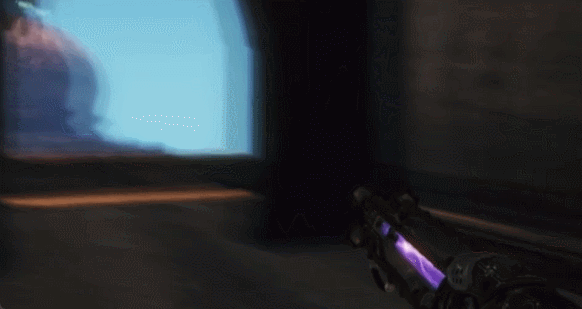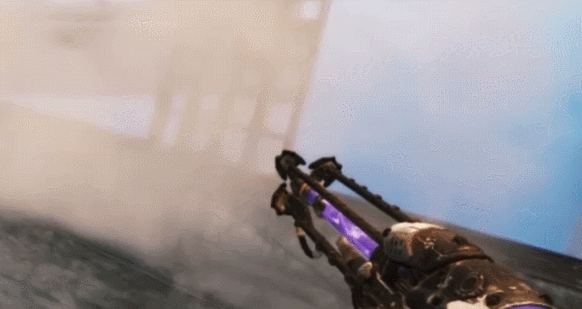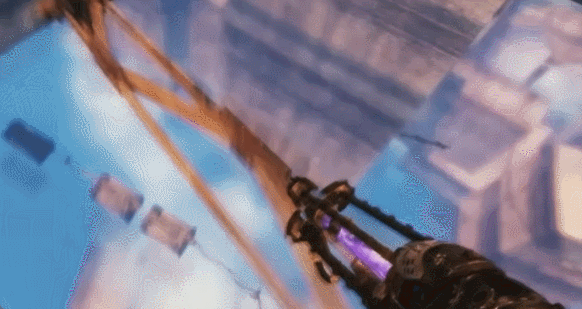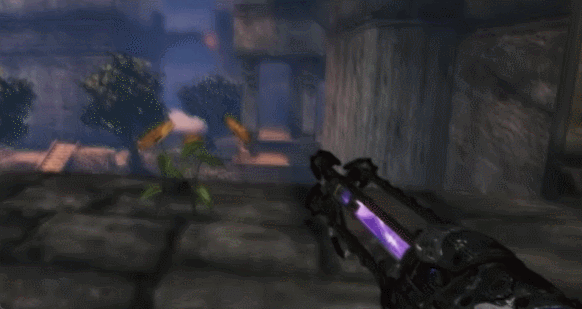It is always great to see professional developers share some knowledge and personal experience. Here is a test map that level designer Steve Lee created with Unreal Engine 3 to get a job on BioShock Infinite at Irrational Games.

A test level vs. the final version of BioShock Infinite
Earlier this week, Lee uploaded a new video on his YouTube channel, in which he recalled the process of making a map for Irrational Games to join its level design team.
It all started with a brief from the studio asking him to build a “cool vertical space that incorporates what you feel should be the elements of BioShock Infinite’s verticality.” So here are the key things to know about the test level that Lee made:
- It was built with Unreal Engine 3 using the Unreal Development Kit and its standard free assets (for example, a model of a flying vehicle was used as a placeholder for Songbird);
- A lot of the audio and sound effects were sampled from BioShock Infinite’s first trailers that were released at the time;
- Lee’s ultimate goal was to show how the player would use Skylines for vertical travel without knowing how the system made by Irrational actually worked.
Who is Steve Lee?
- Lee started his journey as a level designer as a hobby, when he was making maps for Doom, Quake, and Half-Life 2.
- He got his first professional job as a mission designer in 2007, working at Midway on games like Wheelman and Necessary Force.
- Lee then worked as a level designer at People Can Fly and Irrational Games, contributing to Bulletstorm and BioShock Infinite. His portfolio also includes titles like Dishonored 2, John Wick Hex, and Alba: a Wildlife Adventure.
- Currently, Lee serves as a freelance level/game designer and consultant for other game development studios under his own company Double Function.
Adding as much verticality as possible
Given the limited resources Lee had, he attempted to create as much playable combat gameplay as possible using the minimum amount of AI scripting. That’s why he also didn’t focus on the visual polish or architectural accuracy of Columbia.
Visually, this might look like an Unreal Tournament 3 mod, but gameplay-wise, this level was intended to give the feel of verticality and variety in different spaces and action sequences. “What if you were attacked from behind by people jumping on Skylines, or what if you deal with that enemy and there’s an enemy on the floor below you in the building,” Lee explained. “I literally listed out all of the different examples of verticality that I could think of and just made a level with as many of them as I could.”

Another idea that Lee came up with for this test level was the ability to use crates as covers while moving on the Skylines. He also added enemies that could jump on these tracks and attack the player, but admitted that it would be really difficult to pull off in actual gameplay without designing proper systems. The goal was to show as many options as possible and record a little sequence as a cool pitch for Irrational Games.

For the final part of the level, Lee created a situation where you have to survive the rocket attack. As a result, the building starts collapsing, forcing the player to quickly jump into the abyss and cling to the Skyline far below. “I wanted to do something that would normally be a cutscene, but do it as gameplay. And you experience it all from the first person,” Lee said, adding that he is a huge advocate of this approach.

Faking the Skylines
Lee recalled that he was asked during an interview if he really made the working Skylines, even though he only needed to use geometry placeholders. In fact, he used some tricks based on his experience with Bulletstorm.
The Skylines for this test level were made with Unreal Engine 3’s Matinee system, which was used to script the animation of basic things (walls falling down, platforms moving, etc.) and later became the Sequencer editor in UE4 and 5. So Lee faked the functionality of these air tracks. The player actually fell on invisible platforms that were moving on the same path as the Skyline, which created the feeling of a real ride.

“It’s a good skill to have as a level designer, to be able to find clever ways to script things and pitch an idea before the real tech is there, and just to find clever ways to show your ideas in a way that is cool and engaging,” Lee said in the video.
Another trick was to use some objects as triggers. For example, when the player steps on a specific flower on the map, it launches the animation and lifts the character onto the Skyline. By design, it looks like a real jump, when in fact the player is just standing on an invisible platform.

What can other level designers learn from this experience?
First of all, Lee put a huge amount of work into this sequence, probably even too much for a test level. He spent several weeks on it because he really wanted to work at Irrational Games. So this approach is not something everyone should strive for.
And that’s why Lee noted that he doesn’t want to encourage aspiring designers to “overwork or set needlessly high standards” for themselves.
The issue was that the initial brief didn’t specify how long or large the test level should be. So when the studio’s lead level designer Forrest Dowling saw the scale and complexity of Lee’s map, he acknowledged that he would never design a test like this again.
Another important lesson is that Lee wanted to sell the idea of a city in the sky from the start and convey that feeling through objects and gameplay. “I frequently suggest this as a goal of all level design — to showcase what is uniquely cool about the game it’s for,” he said.
Last but not least, Lee likes when level design has a “sense of structure and drama to it,” building up from the very beginning of the level before reaching its culmination at the end.
